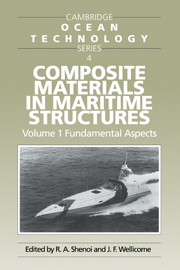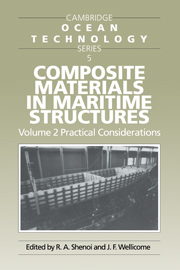Refine search
Actions for selected content:
5487 results in Thermal-fluids engineering
Frontmatter
-
- Book:
- Introductory Fluid Mechanics
- Published online:
- 05 June 2012
- Print publication:
- 31 August 2010, pp i-iv
-
- Chapter
- Export citation
2 - Primer Vector Theory and Applications
-
-
- Book:
- Spacecraft Trajectory Optimization
- Published online:
- 06 December 2010
- Print publication:
- 23 August 2010, pp 16-36
-
- Chapter
- Export citation
7 - Global Optimization and Space Pruning for Spacecraft Trajectory Design
-
-
- Book:
- Spacecraft Trajectory Optimization
- Published online:
- 06 December 2010
- Print publication:
- 23 August 2010, pp 178-201
-
- Chapter
- Export citation
4 - Elements of a Software System for Spacecraft Trajectory Optimization
-
-
- Book:
- Spacecraft Trajectory Optimization
- Published online:
- 06 December 2010
- Print publication:
- 23 August 2010, pp 79-111
-
- Chapter
- Export citation
5 - Low-Thrust Trajectory Optimization Using Orbital Averaging and Control Parameterization
-
-
- Book:
- Spacecraft Trajectory Optimization
- Published online:
- 06 December 2010
- Print publication:
- 23 August 2010, pp 112-138
-
- Chapter
- Export citation
Index
-
- Book:
- Spacecraft Trajectory Optimization
- Published online:
- 06 December 2010
- Print publication:
- 23 August 2010, pp 295-298
-
- Chapter
- Export citation
Frontmatter
-
- Book:
- Spacecraft Trajectory Optimization
- Published online:
- 06 December 2010
- Print publication:
- 23 August 2010, pp i-vi
-
- Chapter
- Export citation
10 - Swarming Theory Applied to Space Trajectory Optimization
-
-
- Book:
- Spacecraft Trajectory Optimization
- Published online:
- 06 December 2010
- Print publication:
- 23 August 2010, pp 263-294
-
- Chapter
- Export citation
1 - The Problem of Spacecraft Trajectory Optimization
-
-
- Book:
- Spacecraft Trajectory Optimization
- Published online:
- 06 December 2010
- Print publication:
- 23 August 2010, pp 1-15
-
- Chapter
- Export citation
6 - Analytic Representations of Optimal Low-Thrust Transfer in Circular Orbit
-
-
- Book:
- Spacecraft Trajectory Optimization
- Published online:
- 06 December 2010
- Print publication:
- 23 August 2010, pp 139-177
-
- Chapter
- Export citation
3 - Spacecraft Trajectory Optimization Using Direct Transcription and Nonlinear Programming
-
-
- Book:
- Spacecraft Trajectory Optimization
- Published online:
- 06 December 2010
- Print publication:
- 23 August 2010, pp 37-78
-
- Chapter
- Export citation
Contents
-
- Book:
- Spacecraft Trajectory Optimization
- Published online:
- 06 December 2010
- Print publication:
- 23 August 2010, pp vii-x
-
- Chapter
- Export citation
8 - Incremental Techniques for Global Space Trajectory Design
-
-
- Book:
- Spacecraft Trajectory Optimization
- Published online:
- 06 December 2010
- Print publication:
- 23 August 2010, pp 202-237
-
- Chapter
- Export citation
Preface
-
-
- Book:
- Spacecraft Trajectory Optimization
- Published online:
- 06 December 2010
- Print publication:
- 23 August 2010, pp xi-xii
-
- Chapter
- Export citation
9 - Optimal Low-Thrust Trajectories Using Stable Manifolds
-
-
- Book:
- Spacecraft Trajectory Optimization
- Published online:
- 06 December 2010
- Print publication:
- 23 August 2010, pp 238-262
-
- Chapter
- Export citation

Composite Materials in Maritime Structures
-
- Published online:
- 04 August 2010
- Print publication:
- 28 May 1993

Composite Materials in Maritime Structures
-
- Published online:
- 04 August 2010
- Print publication:
- 28 May 1993
11 - Species and Charge Transport
-
- Book:
- Micro- and Nanoscale Fluid Mechanics
- Published online:
- 05 June 2012
- Print publication:
- 26 July 2010, pp 250-264
-
- Chapter
- Export citation
Index
-
- Book:
- Micro- and Nanoscale Fluid Mechanics
- Published online:
- 05 June 2012
- Print publication:
- 26 July 2010, pp 505-512
-
- Chapter
- Export citation
Preface
-
- Book:
- Micro- and Nanoscale Fluid Mechanics
- Published online:
- 05 June 2012
- Print publication:
- 26 July 2010, pp xv-xvi
-
- Chapter
- Export citation
